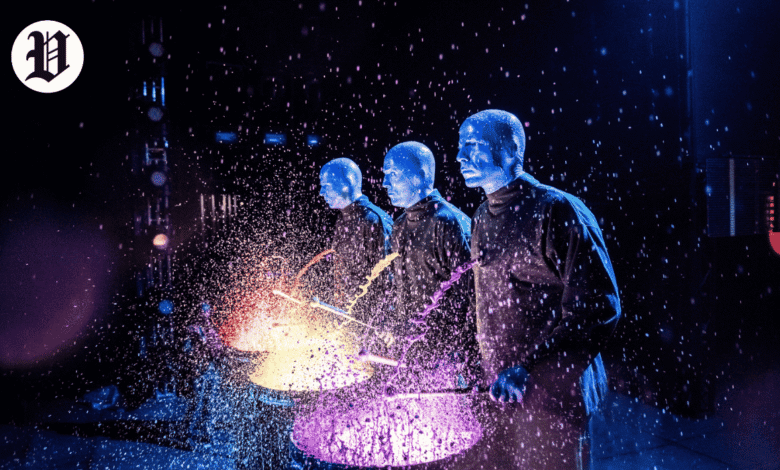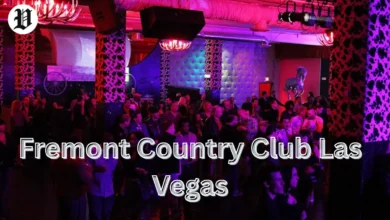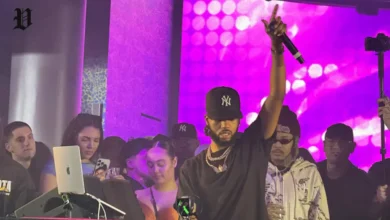The Blue Man Group: Legacy, Members, and Evolution

The Origins of the Blue Man Group
A stage where no words are spoken, yet everything feels alive with energy. Bald figures, coated in striking blue, draw you in with pounding rhythms and silent antics that somehow speak straight to the soul. That’s the magic of the Blue Man Group, a true game-changer in performance art that’s been captivating hearts since it first hit the scene in 1987. It all started in the bustling streets of New York City, thanks to three close friends—Matt Goldman, Phil Stanton, and Chris Wink—who dove headfirst into the wild art world of the late ’80s. What kicked off as quirky street acts and hidden gems in underground venues soon exploded into something massive, mixing beats, laughs, and eye-popping visuals that make you question what art really means.
You can’t ignore how they’ve shaken up culture. Back when shows were all about big voices and tight scripts, these quiet blue characters flipped the script, pulling people together through raw feelings like wonder, delight, and a dash of silliness. That start in 1987 was like a quiet revolution against old-school theater, pulling ideas from raw performance art and electrifying rock gigs. Thinking back on it, they’ve done more than just put on shows; they’ve lit a fire under artists everywhere to break the mold. From those early days in Manhattan dives to packing stadiums around the world, their tale reminds me how a spark of imagination can cross oceans and languages without a hitch.
Who Are the Blue Man Group Members?
Deep down, the Blue Man Group thrives on a sense of enigma. That signature “three blue men” setup—three guys always on stage, slathered in blue from head to toe—stands for togetherness, being nameless, and the notion that just about anyone could slip into that role. It’s not a static lineup; instead, it’s a shifting crew of skilled pros who live and breathe the vibe. As time’s gone on, the cast has grown and changed, with the original trio easing off the daily grind to steer the ship creatively, while fresh faces get put through the wringer in auditions and training.
Those founders are still the beating heart: Matt Goldman brings that bold business flair, Phil Stanton crafted those initial onstage personas with his charisma, and Chris Wink dreamed up the wild ideas that glue it all together. Right now, you’ve got roughly 70 Blue Men scattered globally, each putting in serious time to nail the moves, the sync, and the heartfelt punch. This constant refresh keeps things lively, letting them tweak and grow without losing that core spark. It hits home that the Blue Man Group isn’t really about stars; it’s about melting into a group flow where egos fade away for the sake of pure creation.
Bio Table
| Name | Role | Bio |
|---|---|---|
| Matt Goldman | Co-founder, Performer | Co-founded the Blue Man Group in 1987. A key figure in its creative direction and performances. He continues to contribute to the show’s evolution. |
| Phil Stanton | Co-founder, Performer | Another co-founder, Stanton’s vision helped shape the group’s early identity and stage presence. |
| Chris Wink | Co-founder, Performer | Co-founder and one of the original “Blue Men”, Wink’s creativity and vision played a huge role in the group’s identity. |
The Evolution of the Blue Man Group
The path the Blue Man Group has traveled is all about rolling with the punches and pushing boundaries. Starting from those off-Broadway beginnings in the ’90s, they spread like wildfire, kicking off a Las Vegas stint in 2000 that locked in their spot as legends. Heading to Vegas turned them from underground favorites into household names, pulling in crowds by the millions at the Luxor Hotel & Casino. Along the way, they’ve amped up the tech—think glowing LED displays and hands-on bits—while holding onto that wild, beat-driven mayhem.
They didn’t stop there; spots popped up in Boston by 1995, Chicago in ’97, Orlando come 2007, and even overseas in places like Berlin. Every spot tweaks the act to fit the local vibe, but the heart stays true. Sure, they’ve hit bumps—shifting venues, the whole mess of the pandemic—but they’ve bounced back stronger with road shows and updated twists. When I think about it, their grit mirrors the Blue Men onstage, dodging disorder without a word, turning tough spots into triumphs. They’ve reshaped how we see fun, weaving fancy art with stuff anyone can enjoy.
Iconic Blue Man Group Performances and Shows
Stepping into a Blue Man Group show feels like diving into a storm of senses, where quiet ramps up the thrill of every hit and burst of hue. Their edge comes from those wild inventions: PVC tubes belting out eerie tunes, huge drums thundering away, and odd gadgets like the Chapman Stick or hammered dulcimer adding depth. These aren’t mere props; they’re like extra limbs, spinning ordinary stuff into full-blown orchestras.
Over at the Luxor in Las Vegas, their enduring home base plays out in a tailored space, dishing out funny bits, crowd involvement, and stunning sights—paint flying in perfect time, for instance. The real genius is in the unspoken tales, stirring up that innocent awe with spot-on dances and flashy screens. I’ve caught myself wondering how they dig into our basic urges, sparking giggles, surprises, and bonds without uttering a peep. That special mix is why their acts stand out, rippling into music clips and big events everywhere.
The Blue Man Group Today: Where Are They Now?
Here in 2025, the Blue Man Group is still buzzing, finding their footing in a world that’s moved past the pandemic with fresh vigor. Their Vegas spot at the Luxor keeps drawing fans, marking 25 years with cool nods to the milestone. They’ve got ongoing gigs in Boston, Orlando, Berlin, and even Shanghai for that global twist. The North American Tour keeps the excitement rolling to new folks, even as the New York chapter wrapped up this year after an epic 34-year ride.
The lineup’s shifted organically, with newcomers adding today’s edge while tipping hats to the originals. Goldman, Stanton, and Wink stick around as the guiding lights, making sure things grow without drifting. Peering ahead, it’s easy to imagine them dipping into VR or more worldwide jaunts to stay fresh in our screen-heavy times. What keeps them going strong is those evergreen ideas—finding links in a scattered world—nudging us that curiosity never fades, no matter what.
The Symbolism Behind the Blue Men
That blue coating goes way beyond just looks; it’s loaded with meaning. It wipes away personal traits, hiding faces so the actors turn into everyday symbols of us all—nosy, fun-loving, and oddly out-of-place. This common blue bonds them, smudging the divide between stage and seats, me and you. It stirs up feelings: that raw openness, the sheer happiness in group vibes.
On a bigger scale, it ties into what we all share: blue echoing vast seas, or flipping sadness into party mode. In our split-up society, the Blue Men gently hint at togetherness, urging us past surfaces. It layers on richness, turning their gigs from mere fun into reflections of how we’re all linked.
FAQ Section
Who are the Blue Man Group members?
The core members are the co-founders Matt Goldman, Phil Stanton, and Chris Wink, who originated the concept. However, the on-stage Blue Men are a rotating cast of trained performers, maintaining anonymity to emphasize the group’s collective identity.
How many Blue Man Groups are there in 2025?
As of 2025, there are residencies in Las Vegas, Boston, Orlando, Berlin, and Shanghai, plus ongoing tours like the North American Tour. This equates to multiple active productions worldwide, with around 70 Blue Men in total across all shows.
When did the Blue Man Group start?
The Blue Man Group started in 1987, founded by Matt Goldman, Phil Stanton, and Chris Wink in New York City.
What instruments are used in a Blue Man Group performance?
They use custom instruments like PVC pipes for melodic percussion, large drums, the Chapman Stick (a stringed instrument combining guitar and bass elements), hammered dulcimers, and even modified pianos for dramatic effects
.Where is the Blue Man Group performing in Las Vegas?
They perform at the Blue Man Theater inside the Luxor Hotel & Casino.
Has the Blue Man Group changed members over time?
Yes, the group has changed members extensively. While the founders remain involved creatively, new performers are continually trained and integrated to keep the shows dynamic.
What is the Blue Man Group known for?
The Blue Man Group is known for their innovative blend of percussive music, visual artistry, comedy, and audience interaction, all performed in silence by blue-painted figures.
How long is a typical Blue Man Group show?
A typical show lasts about 90 minutes, without an intermission.
Why do the Blue Man Group members wear blue paint?
The blue paint symbolizes anonymity and unity, allowing performers to represent universal human traits and shared experiences, free from individual identities.
In closing, the Blue Man Group shines like a vivid marker in the entertainment scene—a sign of boundless wonder and shared happiness. Their story murmurs that even in a loud, chaotic life, quiet can bring us closer, and fresh ideas have no limits. As they keep changing, they nudge us to welcome the mystery, coloring our world with lasting amazement.





One Comment